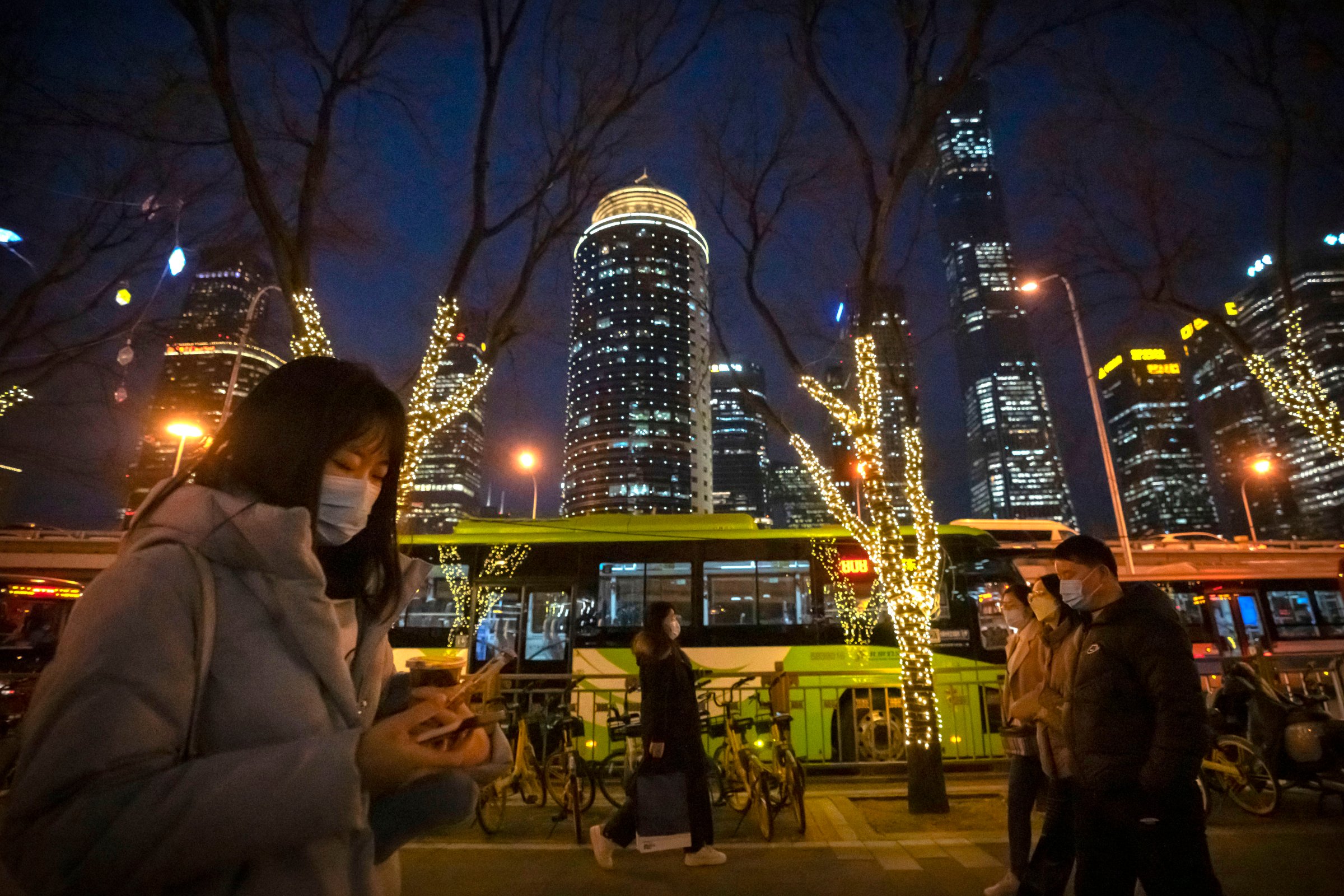
China is posting the steepest drop in Covid deaths among more than 20 places hit hardest by omicron, reviving questions about its virus data and the true impact of the reopening wave as Beijing works to move on from the pandemic.
After meticulously tracking cases for most of the pandemic, China abruptly abandoned its signature zero-tolerance policy at the end of 2022, halting mass testing, quarantines and lockdowns, and narrowing its definition of what constitutes a Covid death. Now, China’s mortality rate is falling at the fastest pace of all the places globally that saw massive omicron waves last year, defined as killing at least 150 people a day at their peak.
Reported deaths at China’s hospitals plummeted to 102 last Monday, from 4,273 on Jan. 4, a decline so steep that it’s fueling concerns over data obfuscation. In comparison, deaths in the US — which rolled out more effective vaccines — peaked at just over 2,600 a day during the height of its omicron wave in early 2022, falling to about 1,400 just over a month later.
“It’s not the typical pattern that you would expect in a country like China,” said Yanzhong Huang, senior fellow for global health at the New York-based Council on Foreign Relations. “China’s population is several times of the US level, so you would expect the actual death toll would be higher, much higher.”
Overall, mainland China’s death rate has fallen 98% from its Jan. 4 peak, according to official statistics. That compares to a drop of about 80% in Hong Kong and Indonesia, 68% in South Korea, 56% in Taiwan, and 45% in the UK and US over a similar period from their respective highs. South Africa and India more closely trail China, with deaths falling 96% and 86%, respectively, from their peaks during a comparable time frame.
The latest mortality statistics come as Beijing grows anxious to move past its chaotic Covid Zero exit, precipitated by rising case counts and protests from citizens weary of the effort needed to contain the virus. The relaxation drove a wave of infections just as the country stopped releasing daily Covid updates — including case counts — after a testing rollback rendered them meaningless.
Accurate Accounting
The lack of clear information and the low number of deaths attributed to Covid raise questions about the accuracy of official data, after hospitals were overwhelmed and families lined the streets with their loved ones’ coffins waiting for access to crematoriums. While all countries have struggled to document their pandemic experience, China’s changing approach has made its accounting particularly fraught.
“China is exceptional in the pace of reduction of Covid-related deaths,” said Zuo-Feng Zhang, an epidemiologist at the University of California, Los Angeles. “I would expect the reduction of mortality (to occur at) a slower pace” because of China’s size and the uneven distribution of infections across different-sized cities and rural areas, he wrote in an email.
The decline has been fast and consistent. Covid-related fatalities fell 72% to 912 for the week ended Feb. 9, from the previous seven days, according to the Chinese Center for Disease Control and Prevention. That was preceded by a drop of 48% from 6,364 for the week ended Jan 26, the agency said.
Hospital Deaths
The numbers take into account only those patients who died in hospitals, potentially a fraction of the true mortality rate in a country where millions of people don’t have easy access to health care facilities, especially in rural areas. The death tally does include patients who had other medical conditions, a reversal of an earlier policy announced in December that excluded those who died with other diseases or who had suffered an event like a heart attack.
It’s an about-face that adds to the murkiness around the official data.
“We know that undercounting happens in many countries,” said Huang, of the Council on Foreign Relations. “The problem for China is the extent of that undercount, or what causes that undercount. First you have the strict definition that discourages doctors from reporting Covid-related deaths. Second, you only count those cases when people die in hospitals.”
Many people who died at home, and even some who died in hospitals, may not have been tested for Covid, he said. That clouds the picture of what is happening across the country.
Siddharth Sridhar, a clinical virologist at the University of Hong Kong, said testing infrastructure breaks down amid acute surges in cases.
“You’re essentially only testing people who are coming to hospital, so you no longer have a clear idea of what’s going on in the community,” Sridhar said.
Data Methodology:
The Bloomberg analysis focused on the 24 countries and locations that experienced the largest daily death tolls during the omicron outbreak since 2022. Except for China, the raw information is based on seven-day average Covid fatality numbers that are compiled by Our World in Data.
The rolling mechanism that smooths out daily fluctuations isn’t available in China. Since the reopening, the government has reported daily Covid deaths only a handful of times. Official figures that chart daily death rates without giving specific numbers suggest they are following a smooth curve, simplifying comparisons to other countries and locations.
–With assistance from Dong Lyu.
More Must-Reads From TIME
- The 100 Most Influential People of 2024
- Coco Gauff Is Playing for Herself Now
- Scenes From Pro-Palestinian Encampments Across U.S. Universities
- 6 Compliments That Land Every Time
- If You're Dating Right Now , You're Brave: Column
- The AI That Could Heal a Divided Internet
- Fallout Is a Brilliant Model for the Future of Video Game Adaptations
- Want Weekly Recs on What to Watch, Read, and More? Sign Up for Worth Your Time
Contact us at letters@time.com